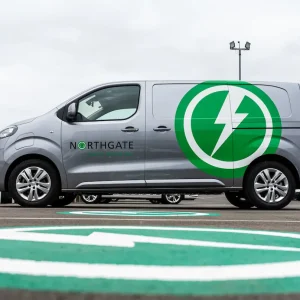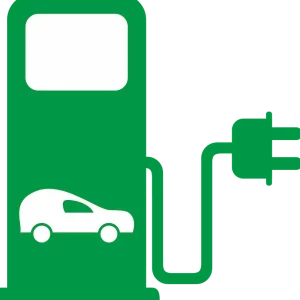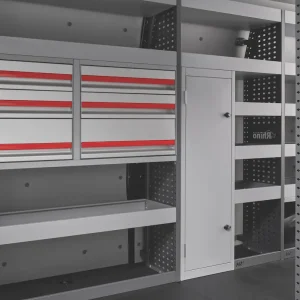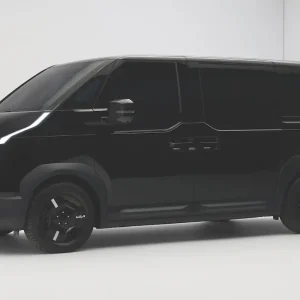Future mobility is a topic that is touching all areas of transport – from the prospect of an autonomous ride-sharing taxi through to robotised deliveries.
From the very nature of what a vehicle should look like to the function it performs, every facet of transportation is under discussion.
The fuels used to propel these future vehicles are also under intense scrutiny. While electric and hydrogen powerplants are forecast to replace diesel in most applications, in commercial vehicles at least it seems likely to remain the fuel of choice, not least because of its flexibility in delivering range as well as relatively clean emissions – providing it is a modern engine.
However, nothing is certain and discussions continue at the highest levels as to what future goods transportation and future power might look like.
Here and now, electricity is most definitely the leading pretender to the diesel throne – at least in a city landscape. Mercedes-Benz’s quarterly report on the state of the UK light commercial vehicle sector highlighted at the beginning of this year the widespread and growing acceptance of electric vans. In its survey, more than 50% of respondents said they would definitely want to drive an electric van for work, while 35% would consider it.
As expected, the greatest concerns are that of range and also charging capabilities, with 63% and 66%, respectively, citing them as worries. Working efficiency due to time lost while waiting for charge is a lesser concern (42%), while the initial cost is a factor for 45% of potential electric van owners.
Yet for Denis le Vot, Renault-Nissan Alliance senior vice-president of the LCV business unit, even the concept of having a driver in a future vehicle is not that cut and dry. With 60% of the world’s population predicted to be living in cities by 2030, package deliveries will become even more critical and complex.
“By 2050 you can multiply by four the transportation [volume] of goods and packages,” Le Vot says. “Further down the road I don’t know, but when you think about autonomous solutions for people, transportation is easy to understand: ‘Car, drive me home’ and the car drives you home. Instead, we’re talking here about delivering a parcel to Mr Smith, and Mr Smith has four sets of stairs, and Mr Smith may or may not be in when the autonomous solution arrives. It has a lot of consequences.”
Le Vot has previously said that “the future of the electric LCV requires knowing what the size the future LCV needs to be”, which raises the very question about the current size, shape and use case for what we currently refer to as ‘a van’.

Alongside unveiling the new Master, Trafic and a concept Kangoo, Renault also revealed its plans for a form of future delivery transportation. While the EZ-Flex may look like Postman Pat’s van, it aims to answer some important and as yet almost unknown questions. In building the EZ-Flex, Renault hopes to work with “the big names” and discover what drivers and operators need from future transport.
“Discussion is where you will discover,” Le Vot continues. “We will disclose soon the big names who we will be working with. The van [EZ-Flex] will be a real one, working on the road to try to better understand the future needs. We don’t know what direction the world is going for last-mile delivery. It could be small, it could be modular.
Big logistic companies that deliver parcels are usually only transporting one layer of parcels – because if you put them on top of each other its 25 minutes to find the right parcel.
They’re just on the floor of the van and you go around and find it, which is totally ridiculous in terms of consumption and in terms of use of the space.”


(Continued from page 1) In its current guise the EZ-Flex, which has a 3m3 load area and all-electric drivetrain, seems like a traditional, albeit shrunken, van. But Renault wants to address productivity as well as transportation and has to think about a range of stakeholders in the equation.
”The concept is very modular, such as preparing the parcels with draws,” Le Vot continues. “The computer prepares packages and you switch containers. Does the van have to be big, does it have to be small? We will find out, because the driver will tell you ‘in Paris we don’t give a damn about size – we just park [in the road] so don’t waste time making it small’.But these are drivers telling us this; the city doesn’t say the same thing.”
Urban transportation increasingly requires zero-emission solutions and while future-proofing new models like the EZ-Flex with electric drivetrains goes some way to pre-empt the problem, Renault’s current portfolio is still very much geared towards internal combustion engines (ICE).
“For electrification, the market is not big, but we are big in the market – 42%,” Le Vot continues. What we are looking for is the transition between the classical ICE vehicle – which will not disappear in the short term – and the new demand.
But what is the new demand? A lot of people ask will you have an EV [version] of that one, a hybrid [version] of the other? We would probably take it the other way around and I would encourage you to see the EZ-Flex, looking at it as ‘what is the need that we have to fulfil in order to get an offer for this in the city last mile?’ London is completely different from Paris. Paris is completely different from [cities in] Italy.
So, we are going to make tests to see if it needs to be small, see if it needs to be flexible, see if it needs to have one driver, if it needs two drivers.
Only from that shall we get a new van for the future. In the meantime, we have an ICE range and an EV range and before going further we are going to study what will come next.”
With so many unknowns, it is hard for anyone to predict where demand, technology or even user needs will go, but Renault and Le Vot seem to be challenging the future and any preconceived notions of its future transportation needs.
“People don’t buy vehicles, they buy residual values and a total cost of ownership more than they do a vehicle,” says Le Vot. “The future of the electric LCV requires more than electrifying a platform – it requires assessing the size of the future vehicle. EZ-Flex may give us some hints on what we should do.”
Comment: Airing new solutions for tyres
If I have learnt anything over the past months in my discussions about future mobility and deliveries, it’s that you should never take anything for granted.
For the time being at least, though, the general consensus is that vehicles will have four round things at each corner.
However, the concept of air-filled rubber is also now under discussion. Michelin has, this month, unveiled its first airless tyre (pictured).

It’s not scheduled for production until 2024, but it promises to eliminate punctures and squash downtime.
Initially only available on passenger cars and SUVs, during discussions with Michelin top brass I discovered they also envisage a healthy demand in city vans and pick-ups.
Laurent Bourrut, executive vice-president for road transportation in Europe, told me that convincing consumers in cars was the key to the tyre being a success as fleets, particularly LCVs, would be quick to see the benefits of a more hard-wearing and puncture-proof product.
Downtime advantages aside, vans have the highest MOT failure rates and tyres are a major weak point in fleet checks. A more robust, safer tyre could well be the perfect accompaniment to the next generation of LCVs.
George Barrow is the UK judge for the International Van of the Year, the prestigious prize awarded by leading European LCV journalists.
Sponsored by:






